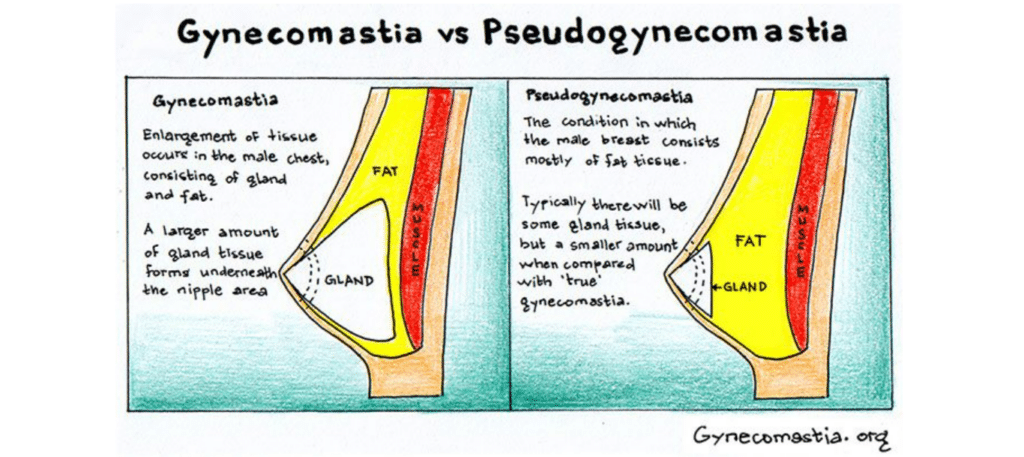Why Doesn’t the Male Breast (Gynecomastia) get Smaller with Weight Loss?

Gynecomastia is enlarged and swollen male breast glandular tissue. This excess glandular tissue is not composed of fatty tissue. However, like most patients, fat cells surround most tissue in the body. The excess chest fat can be reduced if you lose weight, but not the breast tissue. So you can reduce the size of your chest with weight loss only if a significant amount of fat is present. Male breast reduction surgery will remove both the gland and fatty tissue.
How Can I Tell if I Have Gynecomastia…or just Extra Fat?
The abnormal increase in a man’s chest size can be due to gynecomastia or psuedogynecomastia. Gynecomastia is breast tissue development. On the other hand, pseudogynecomastia occurs in overweight men or obese men.

Gynecomastia Evaluation
Evaluating gynecomastia or puffy nipples starts with the history of the condition and a physical examination. The most common history of this condition is adolescent or puberty gynecomastia. This is due to hormonal imbalances or hormonal changes that occur during puberty. The two opposing hormones are testosterone, the male hormone, and estrogen, the female hormone. The key to diagnosing man boobs is that the enlarged breasts do not resolve within two years and become persistent into adulthood. Gynecomastia or male breast reduction surgery is the only solution; weight loss, lifestyle changes, exercise, or special diets will not dissolve the breast tissue.
What is the Gynecomastia Pinch Test?
The “pinch test” is the best test during the physical exam to evaluate if breast tissue is present. The tissue is firmer with more structure than adipose tissue. A gynecomastia doctor, like Dr. Delgado, can quickly tell the difference.

Psedogynecomastia Evaluation
Psuedogynecomastia, or “fake gynecomastia,” is often seen in overweight males. The chest can appear like gynecomastia, but the volume is due to body fat weight gain or an increased body mass index. Therefore, weight loss will reduce chest fat by reducing excess fat tissue through diet, exercise, and a healthy lifestyle. Men often report that the enlarged chest muscles reduce in size when they lose weight and increase when they gain weight.
Male Chest Reduction Surgery
Male breast reduction surgery is the best treatment for gynecomastia. In many cases, surgery is an option for men with pseudogynecomastia. This can be as simple as liposuction. However, excess breast tissue must be removed through surgical excision to treat gynecomastia. The surgery takes 2-3 hours and is performed under general anesthesia.
Conclusion
Gynecomastia occurs when there is an excess of male breast tissue. The solution is male breast reduction. For men with psedogynecomastia due to weight gain or obesity, weight loss is a successful option.

